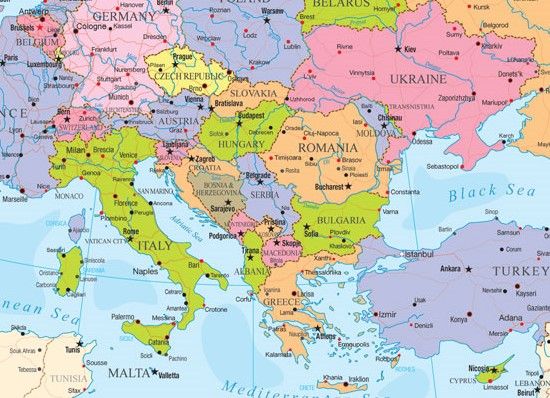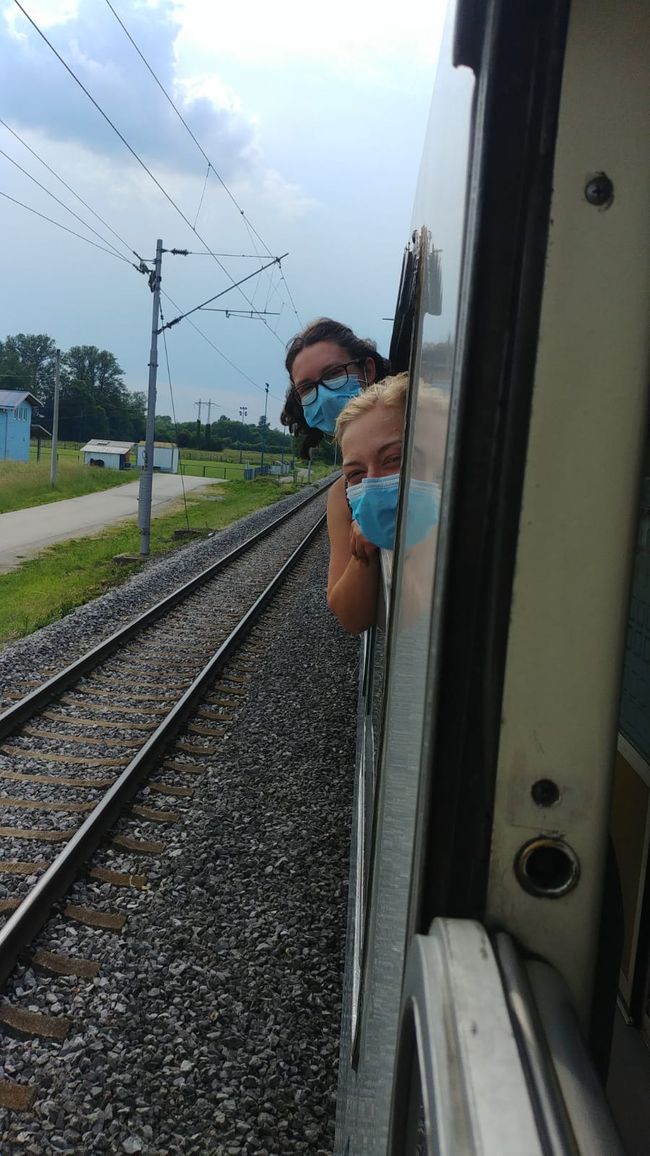Amorgosa — mazās Kiklādas kāpumā (22. pietura)
Publicēts: 28.07.2021
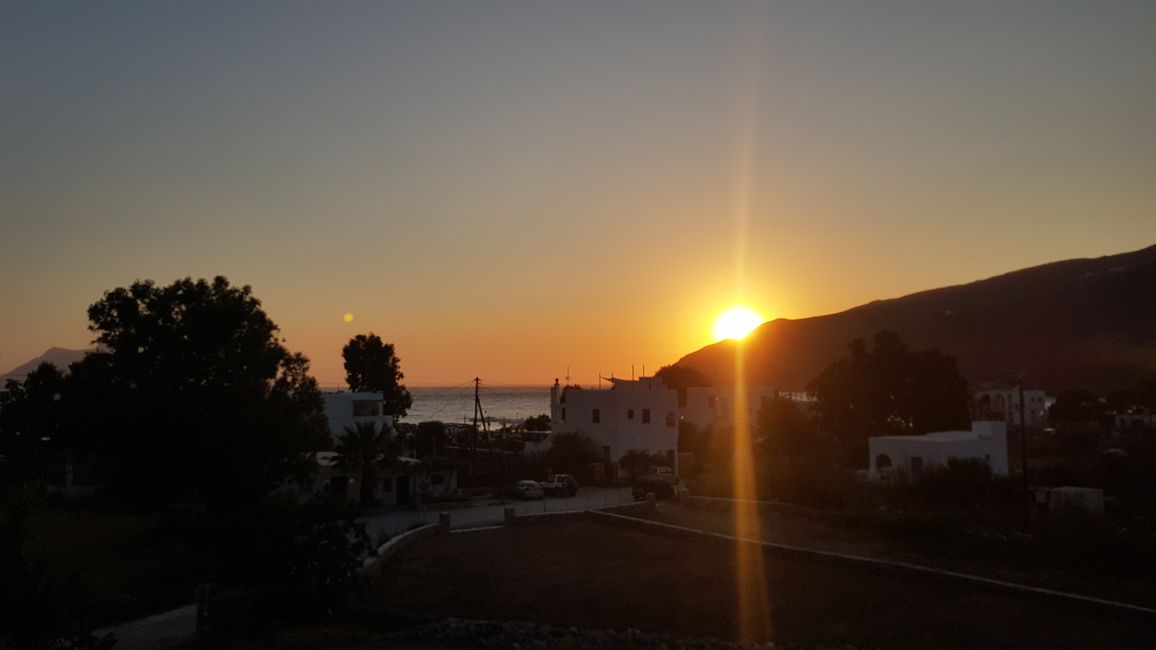
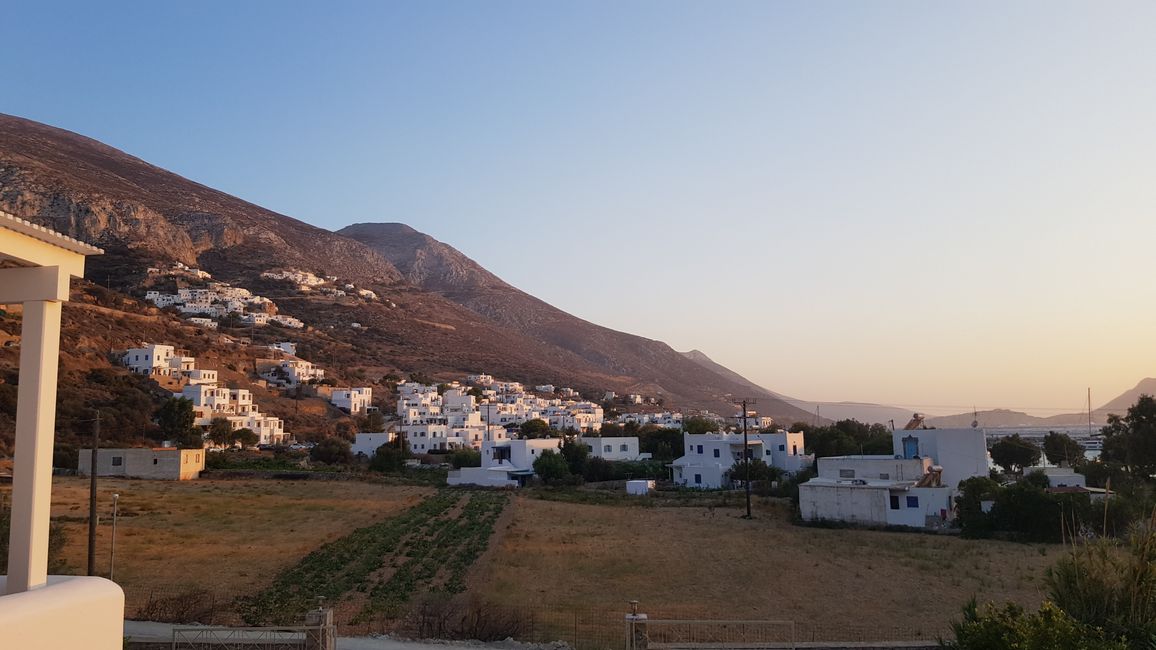
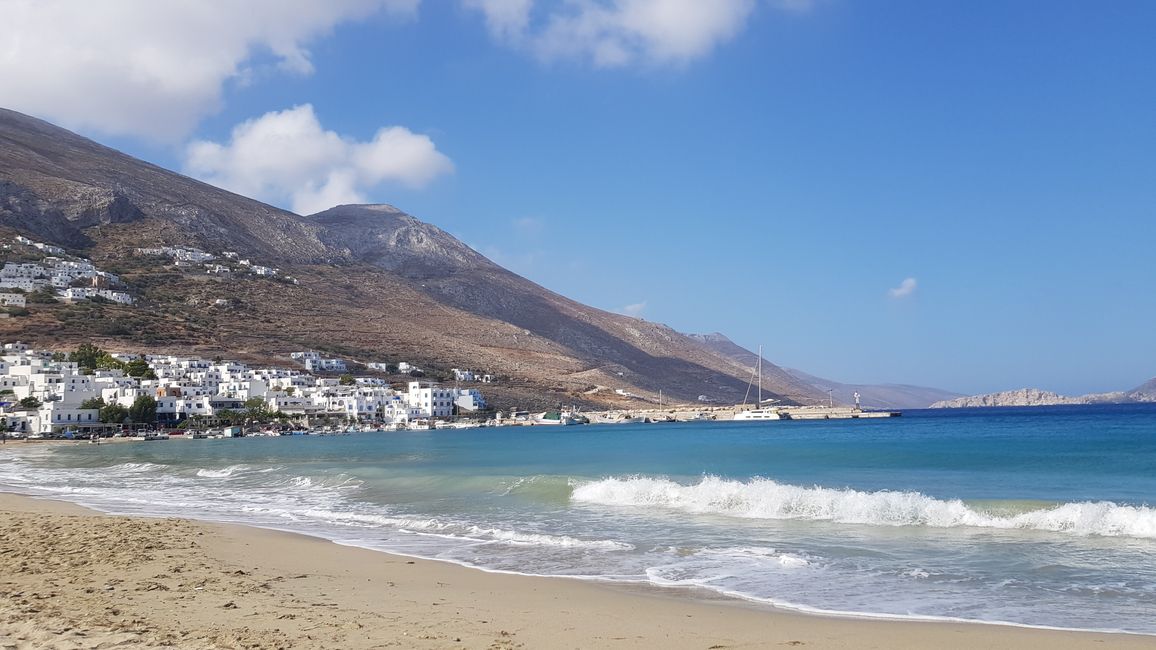
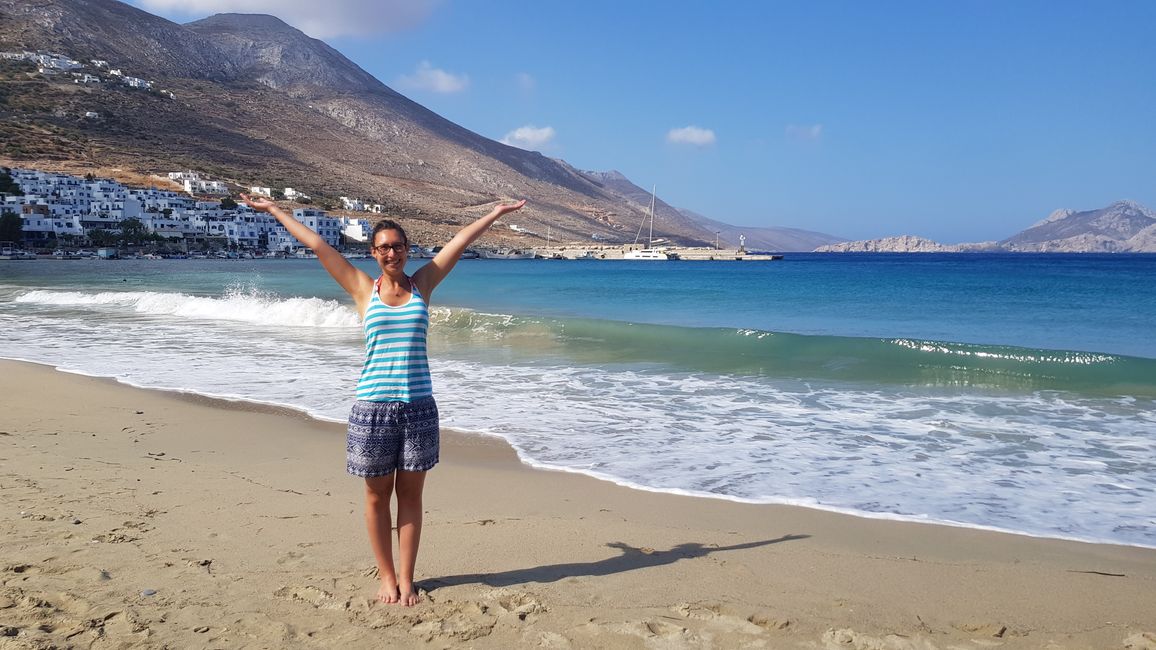
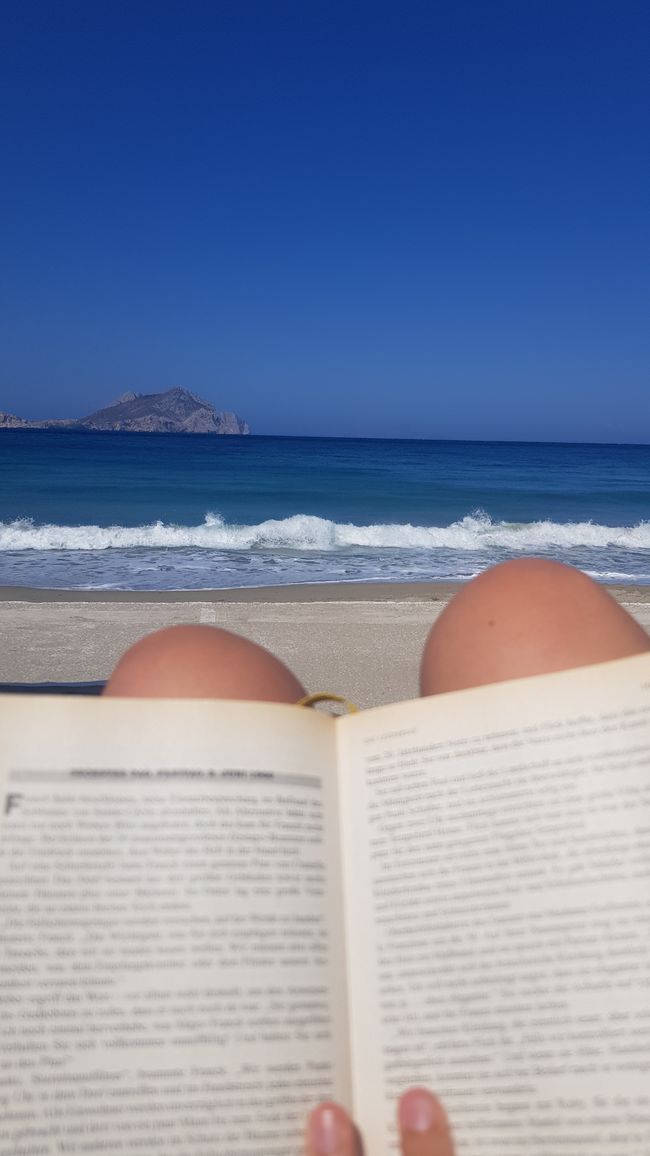
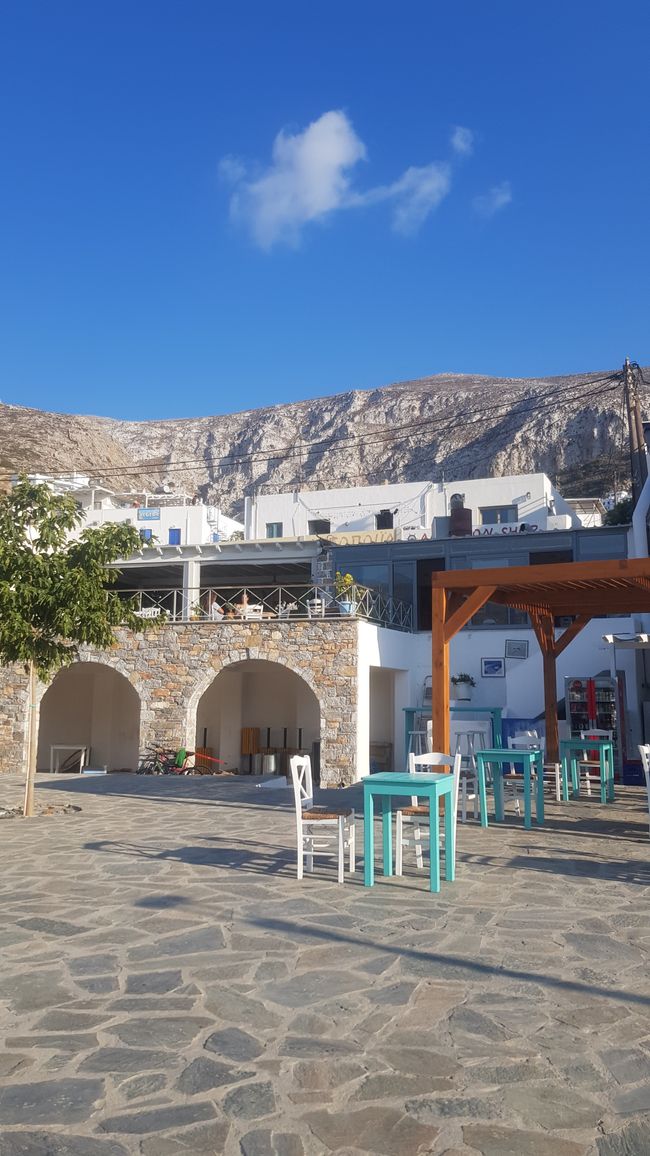
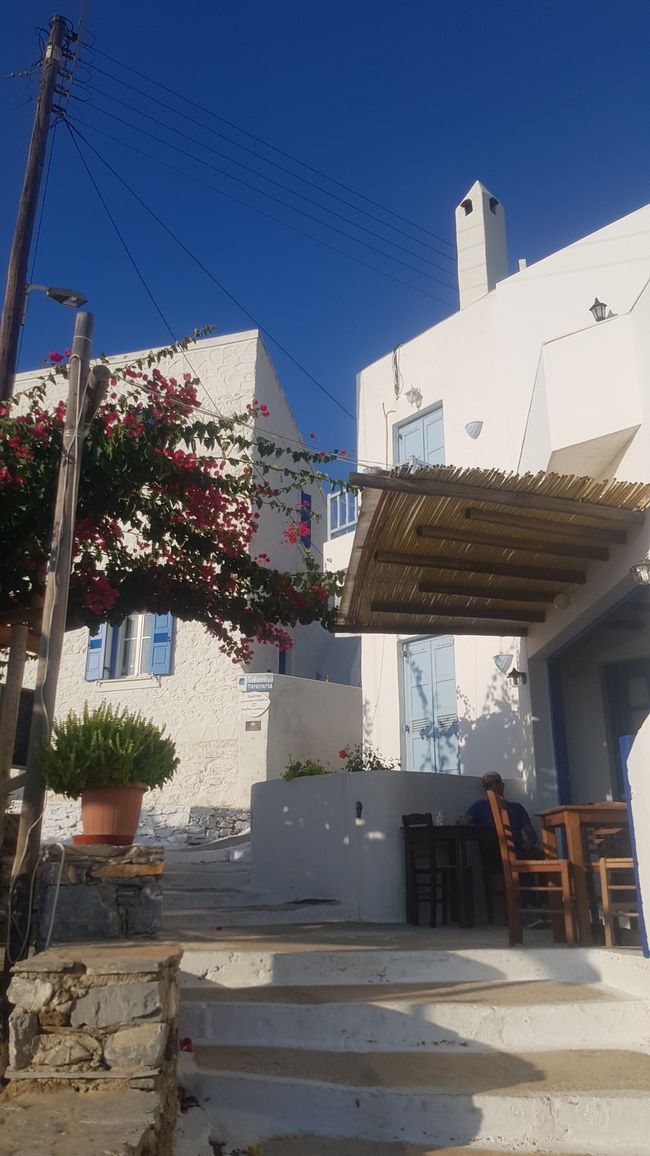
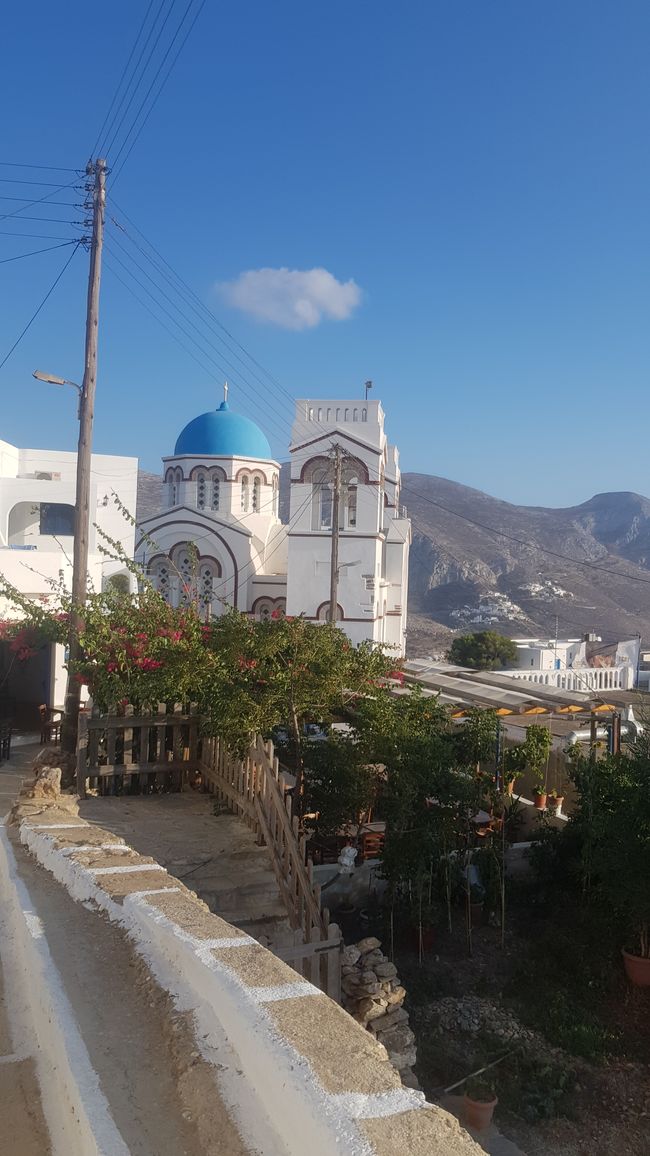
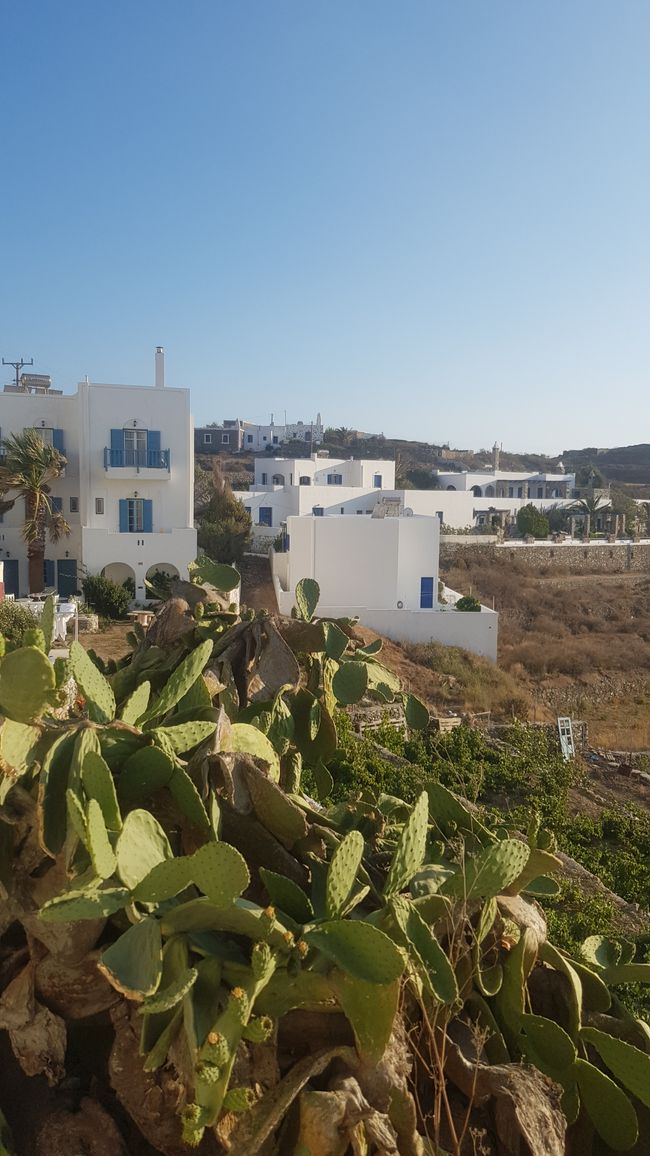
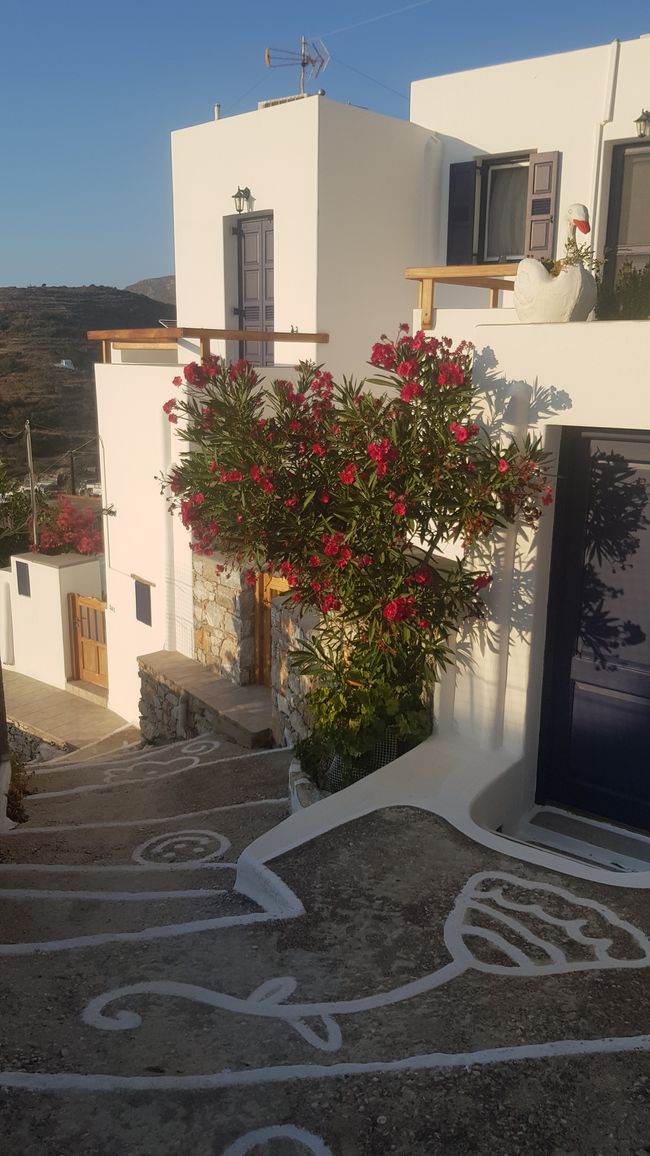

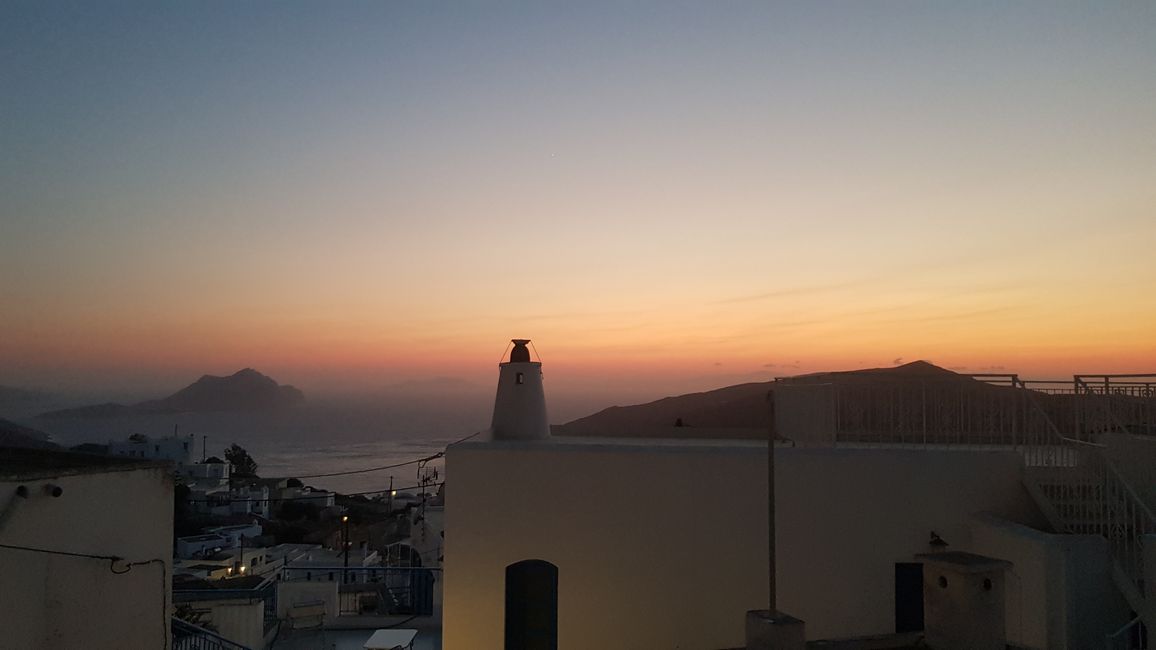
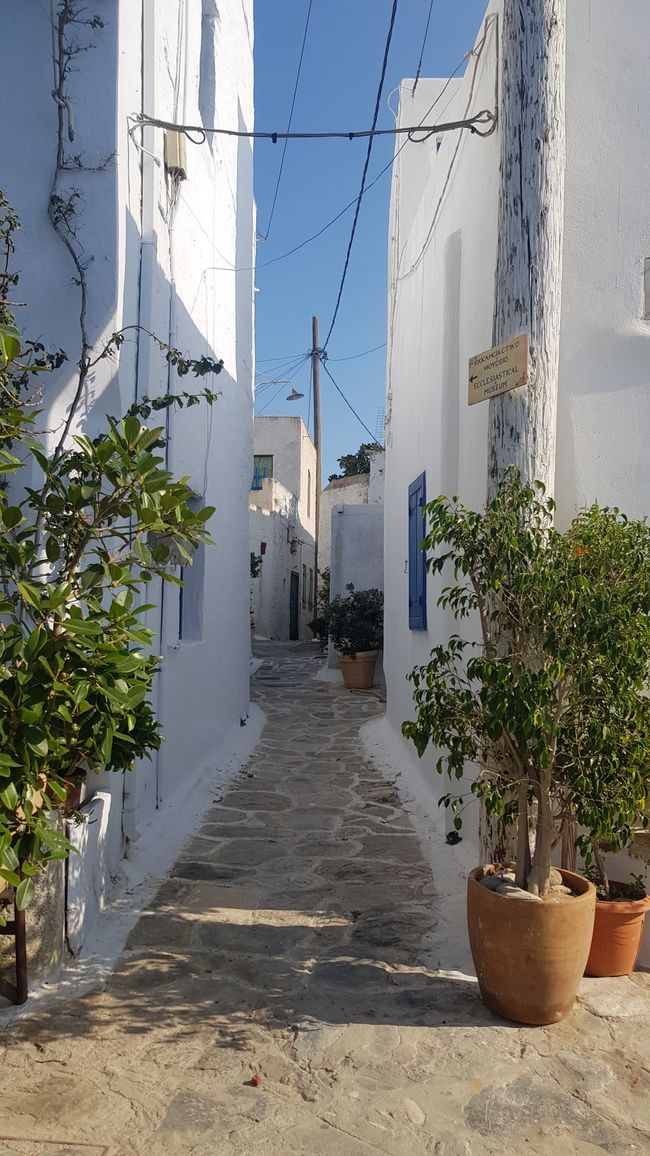
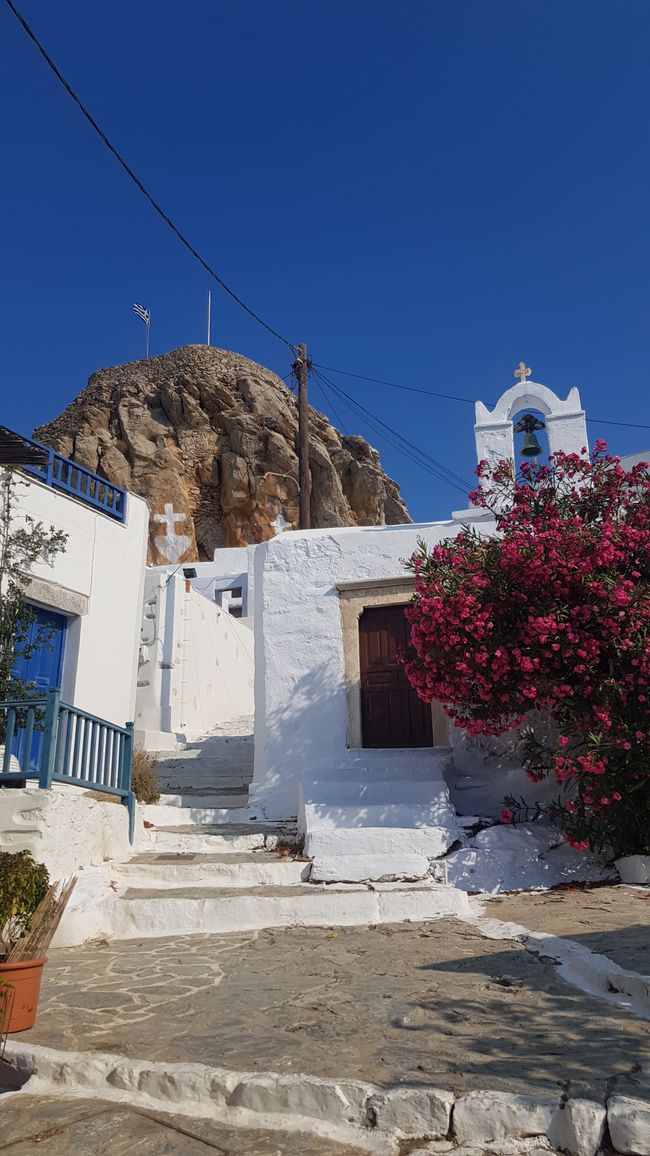
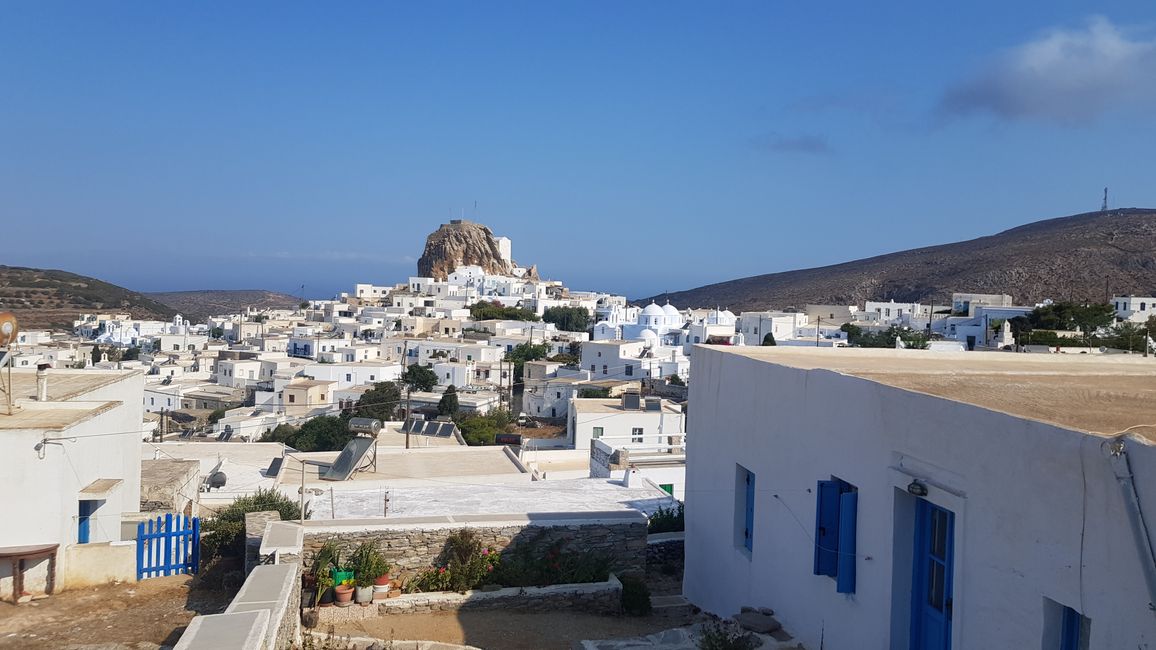
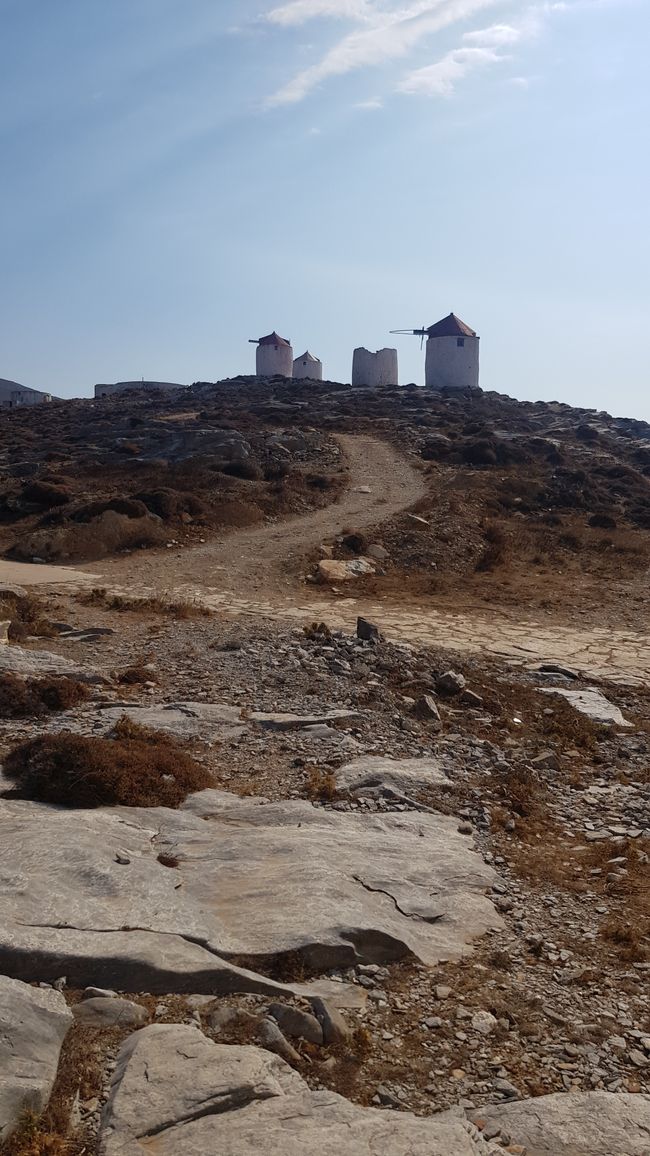
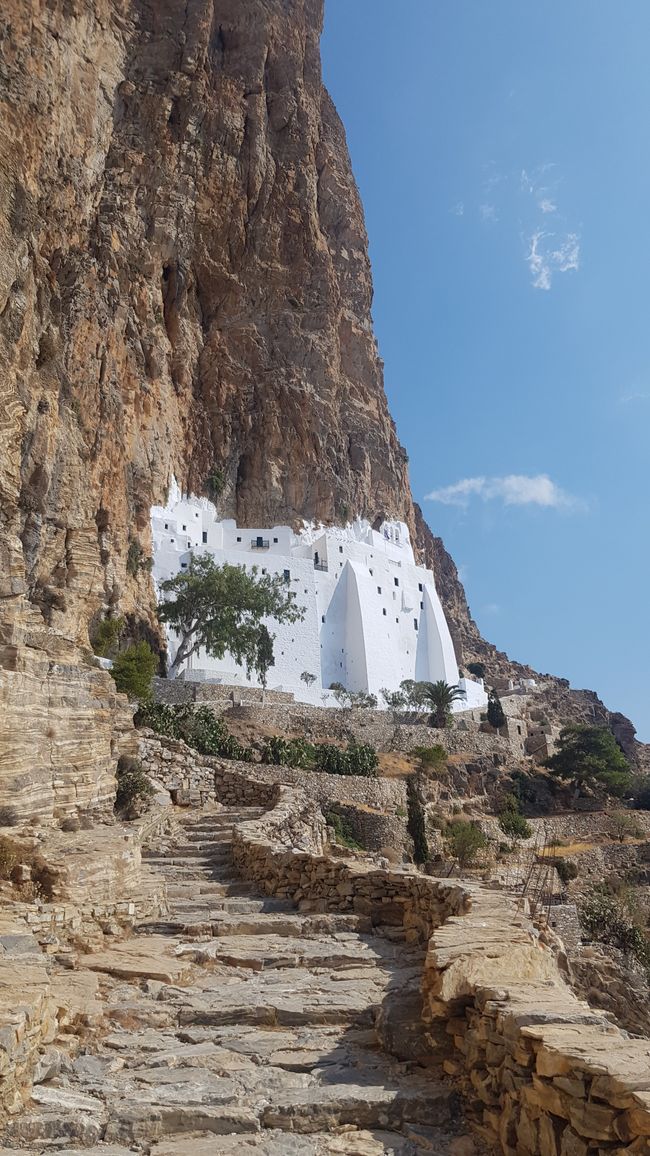
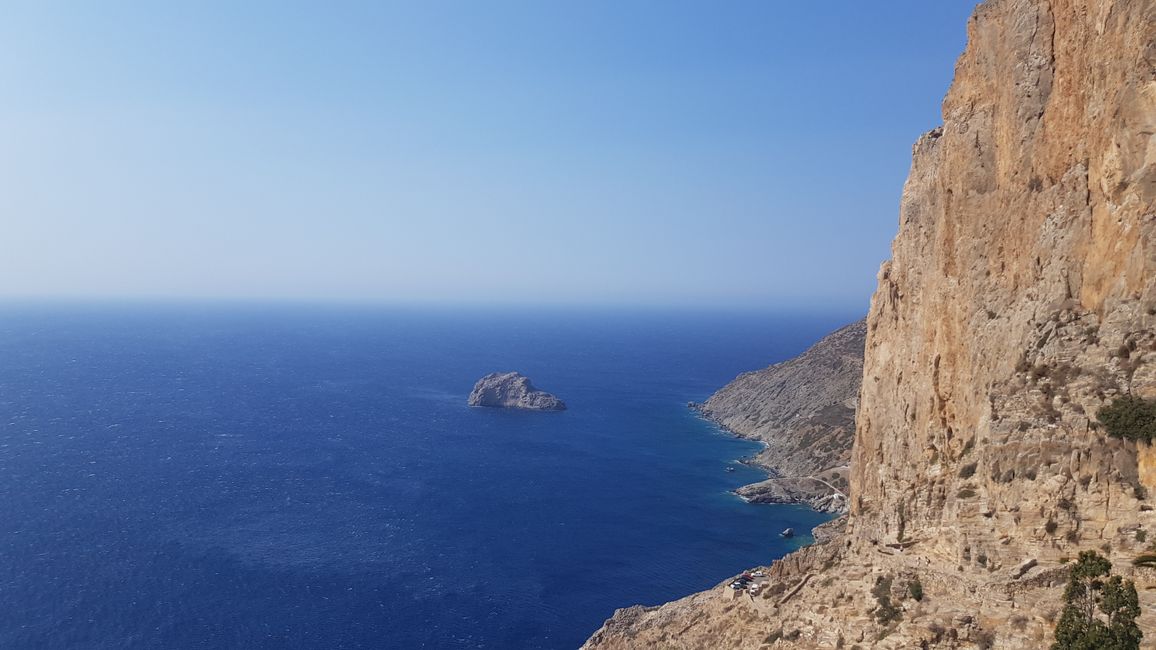
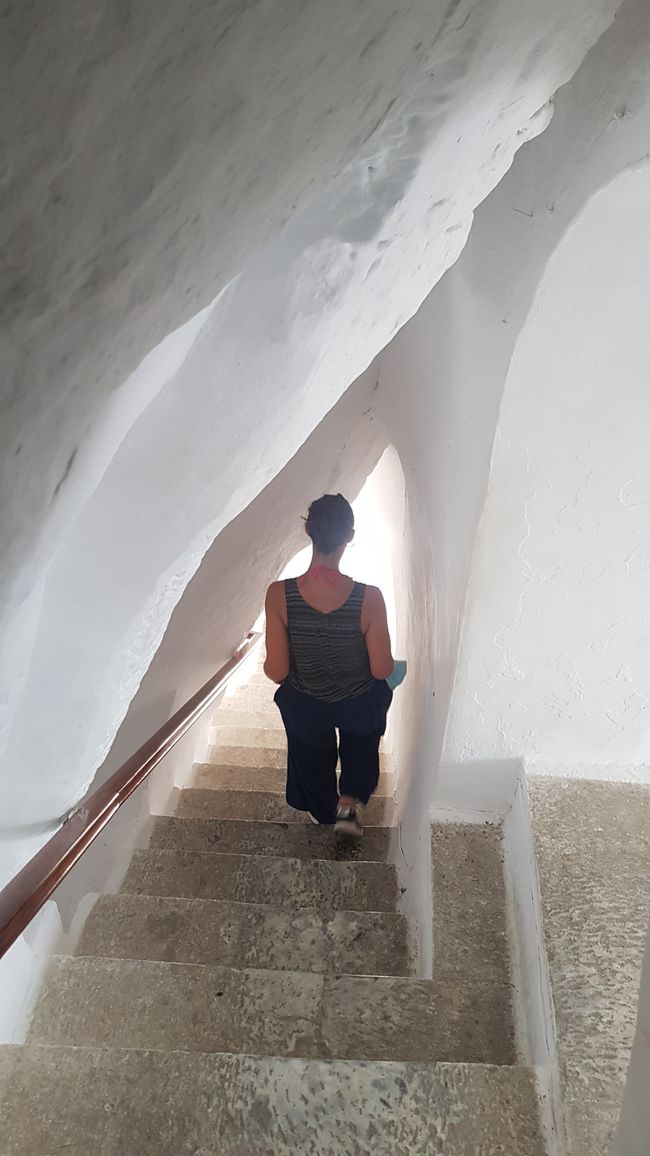
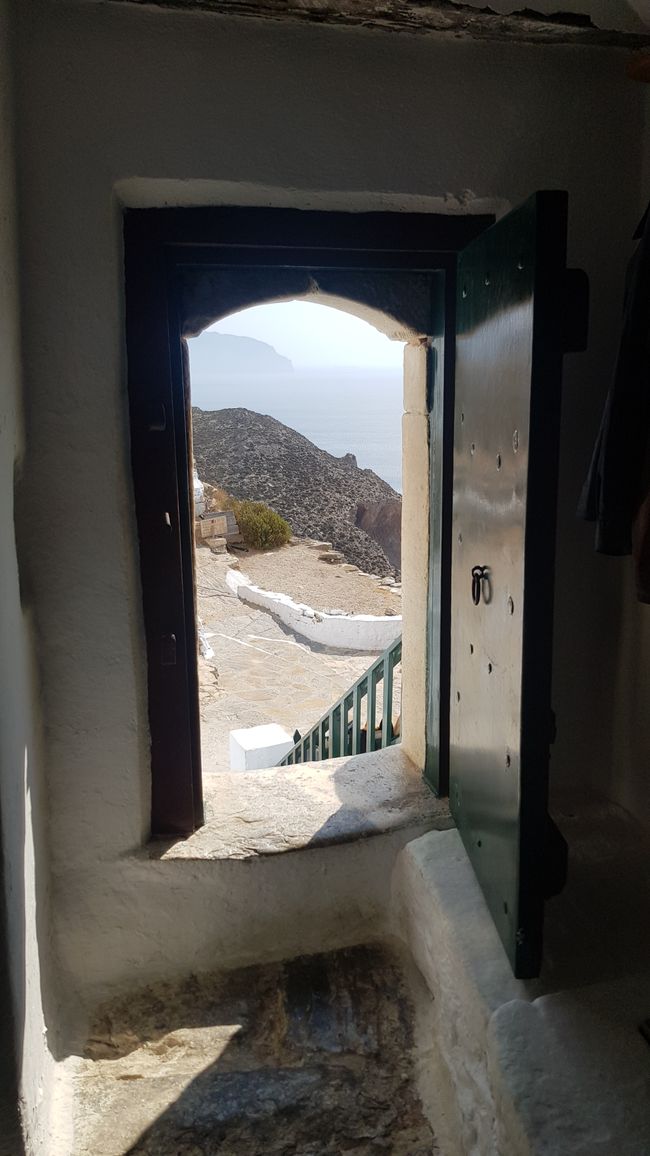
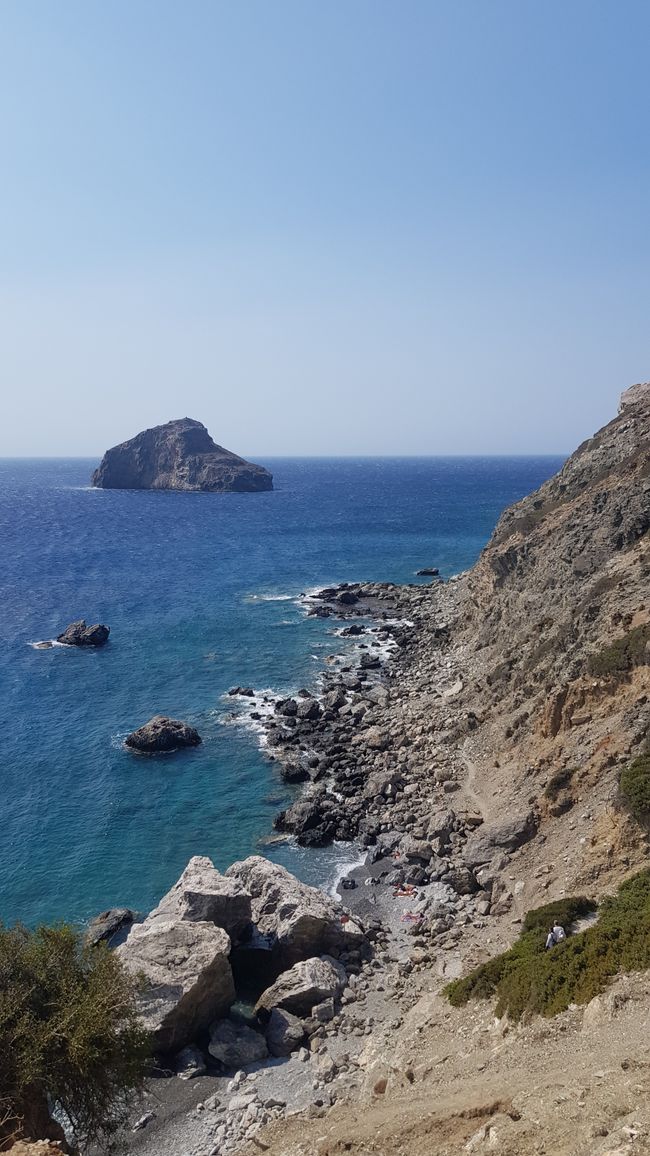
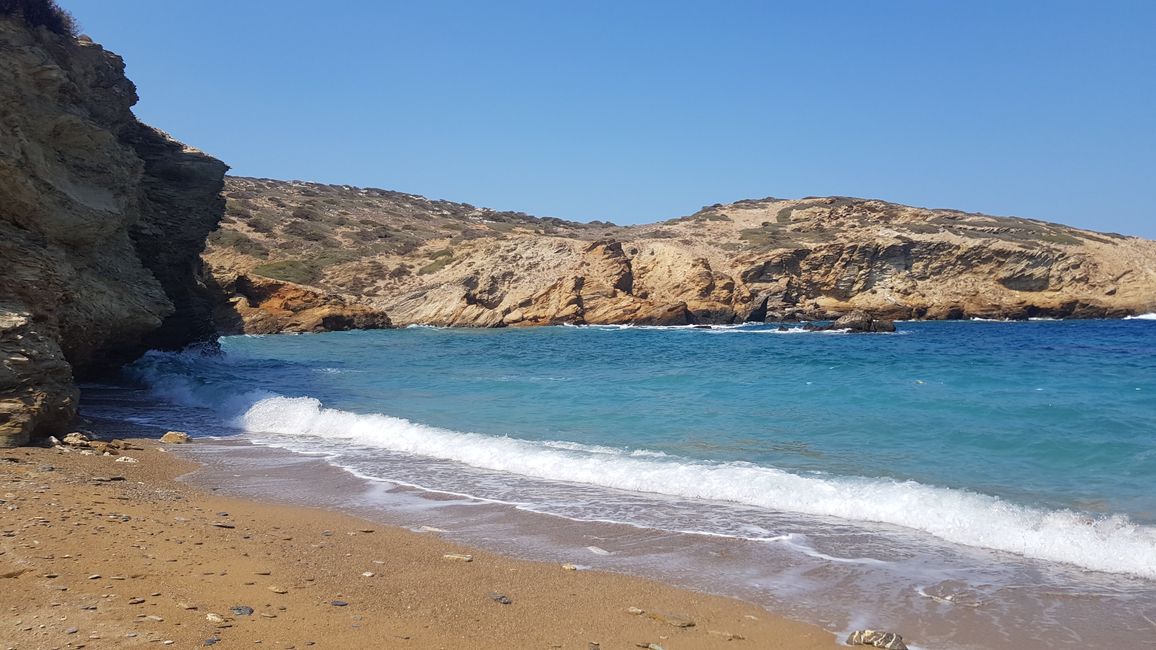
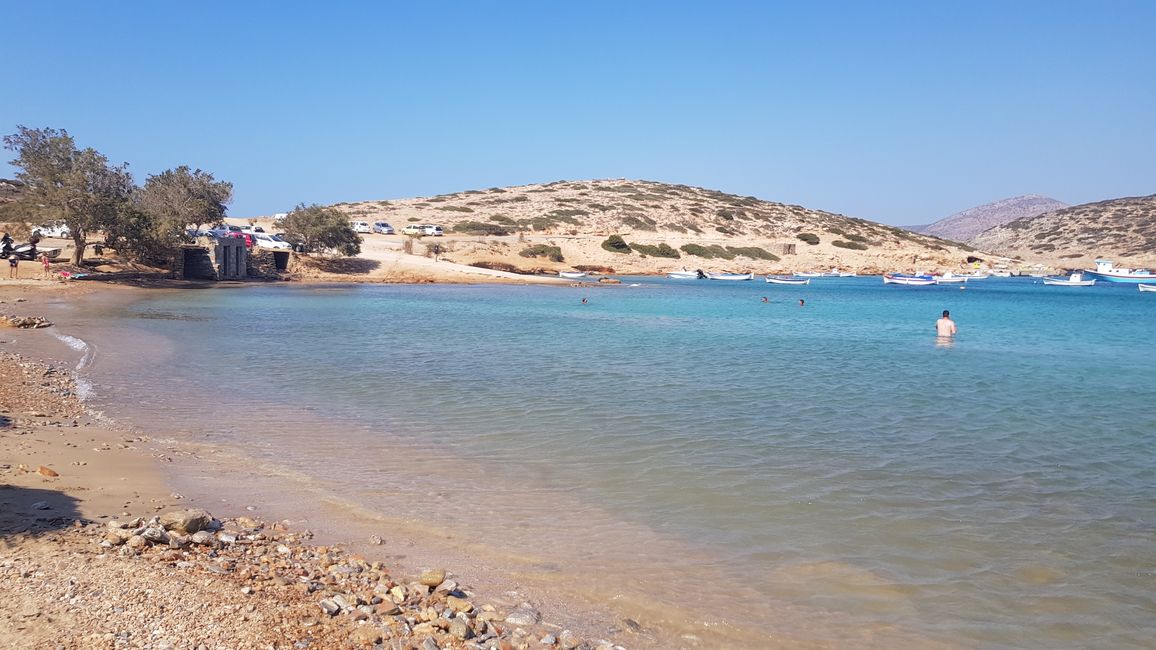
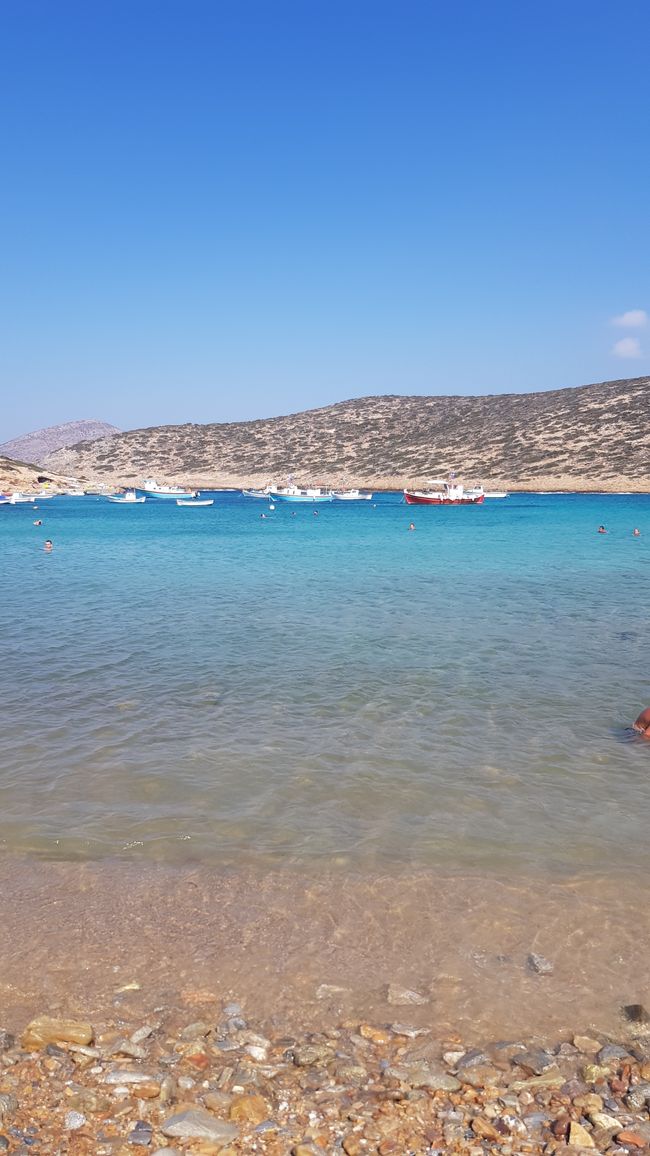
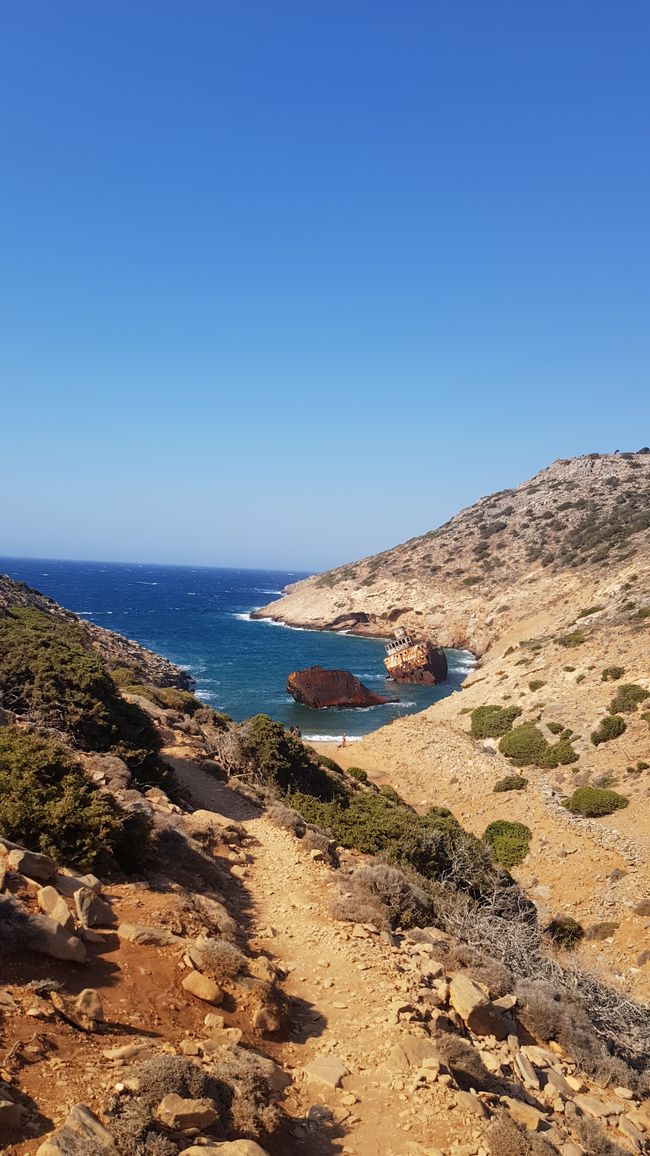
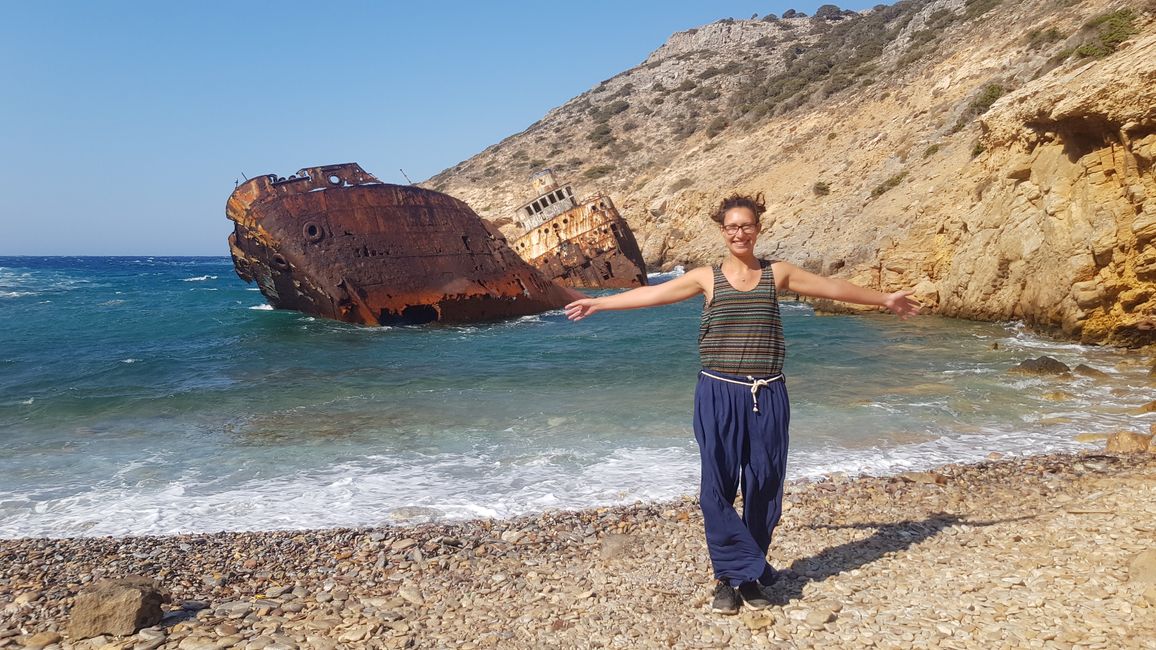
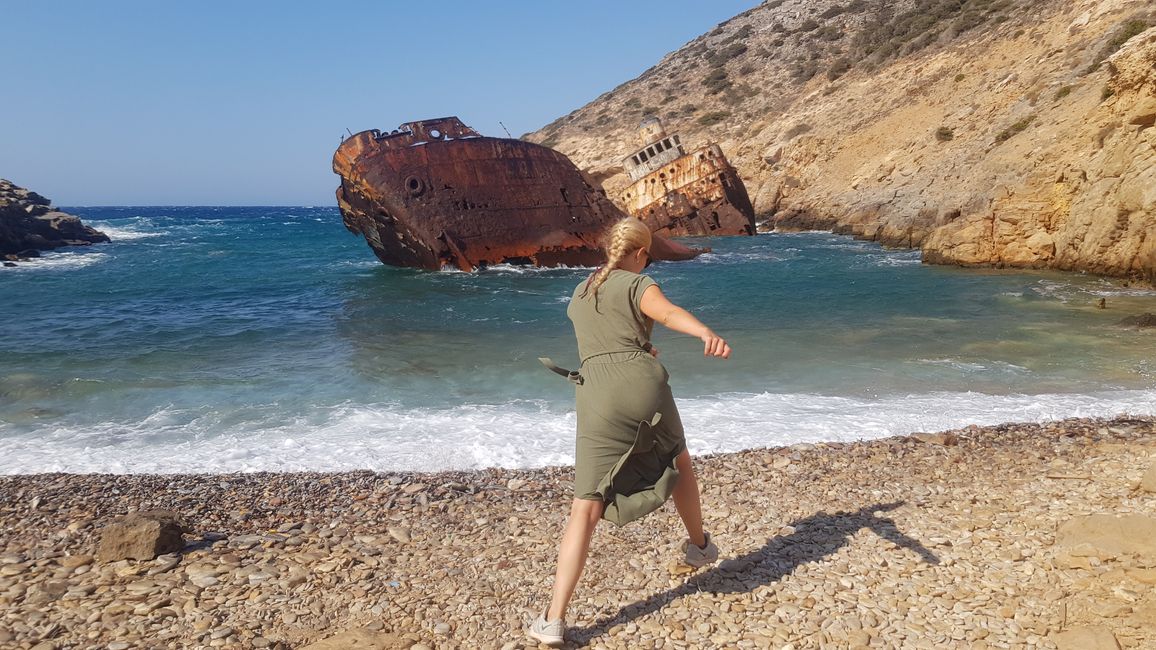
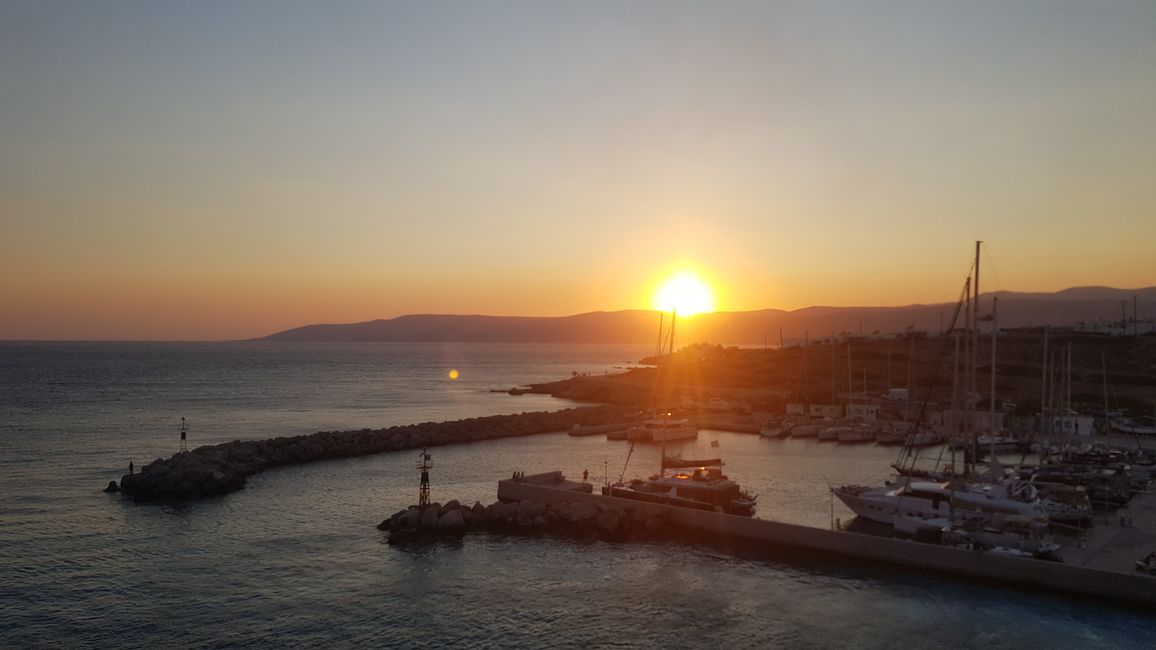
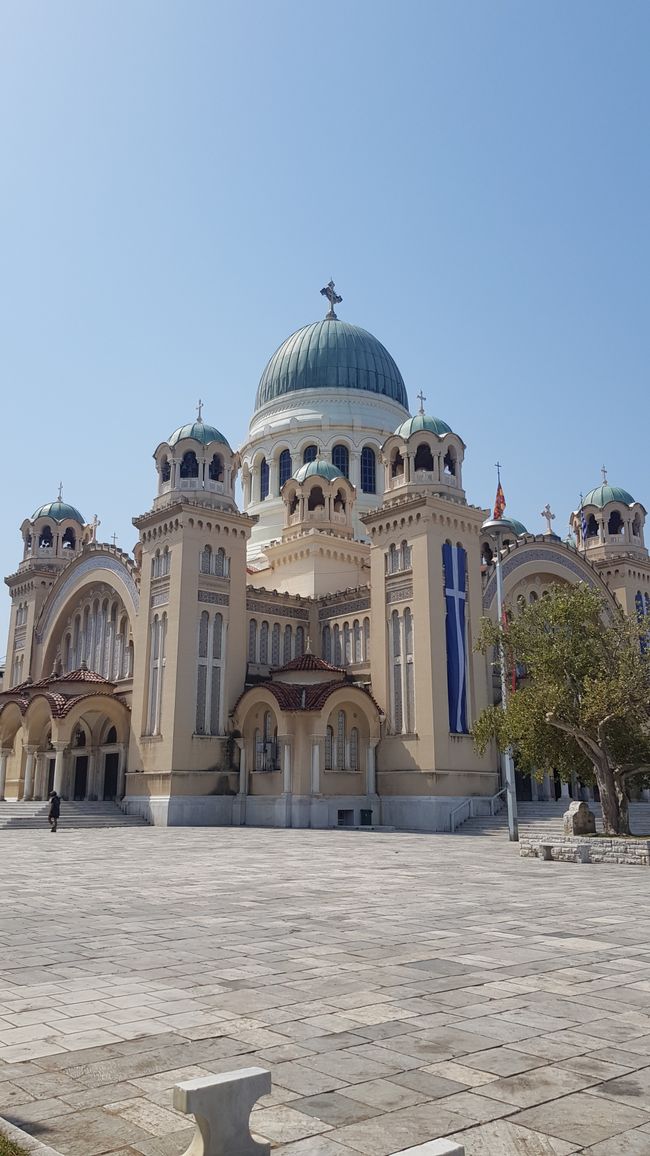
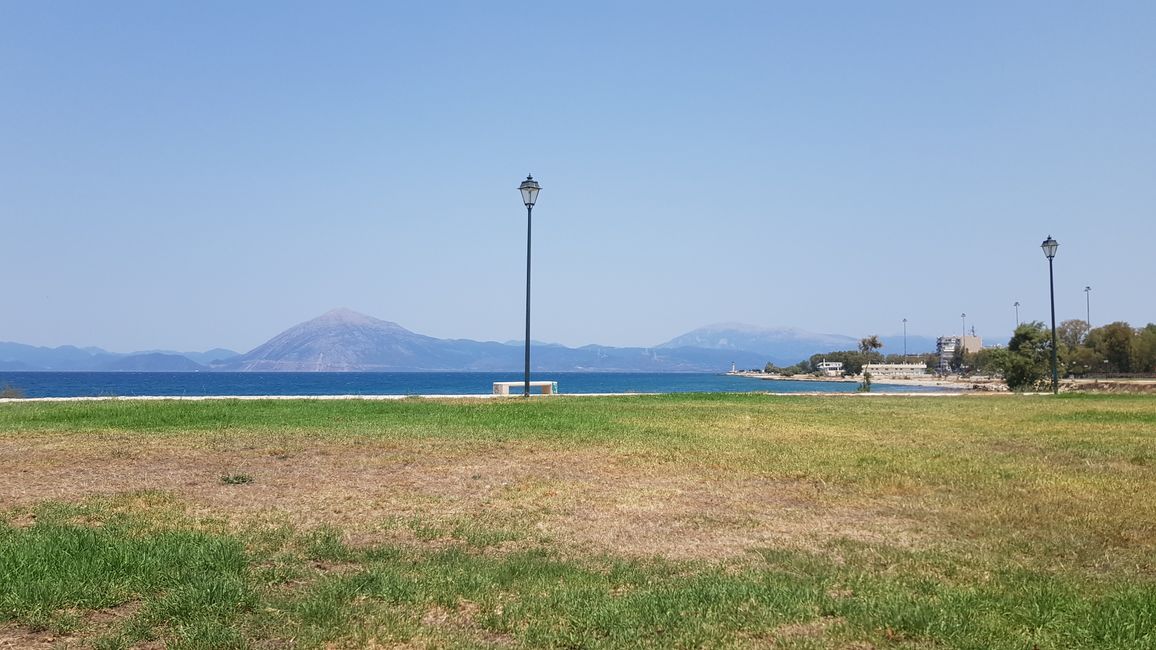
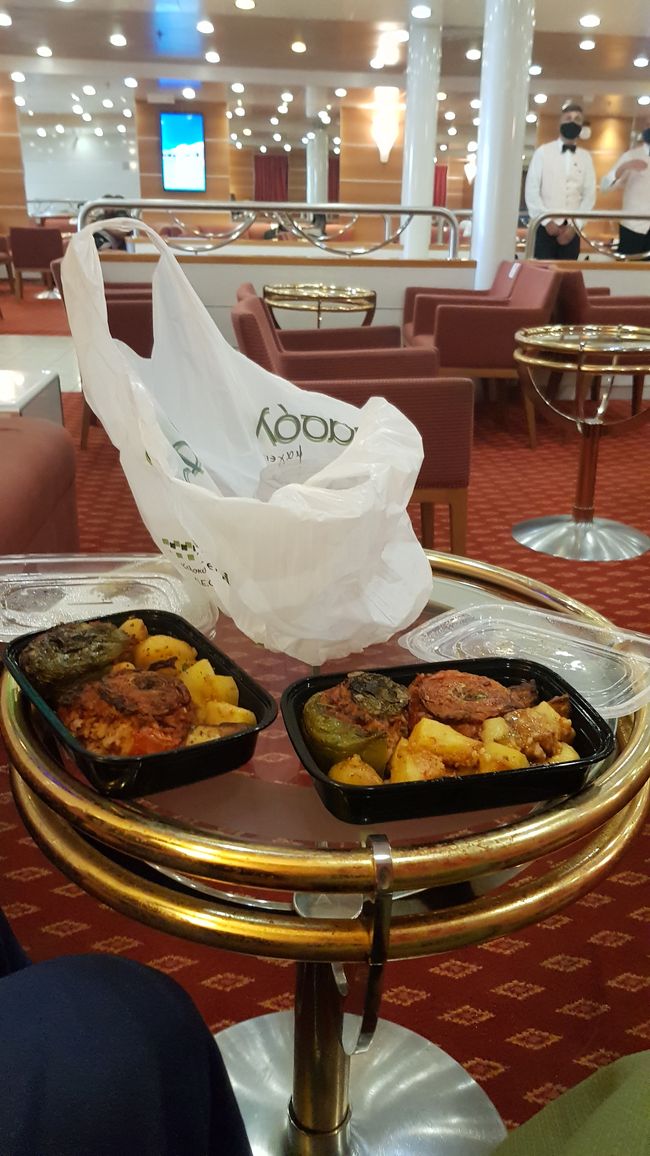
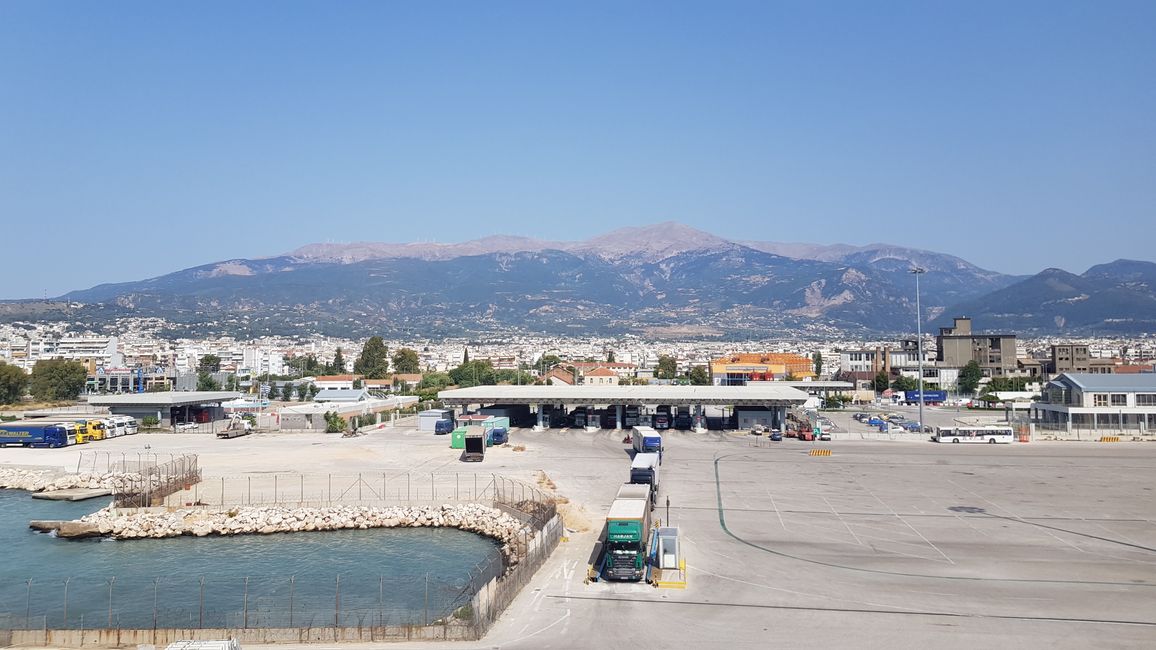
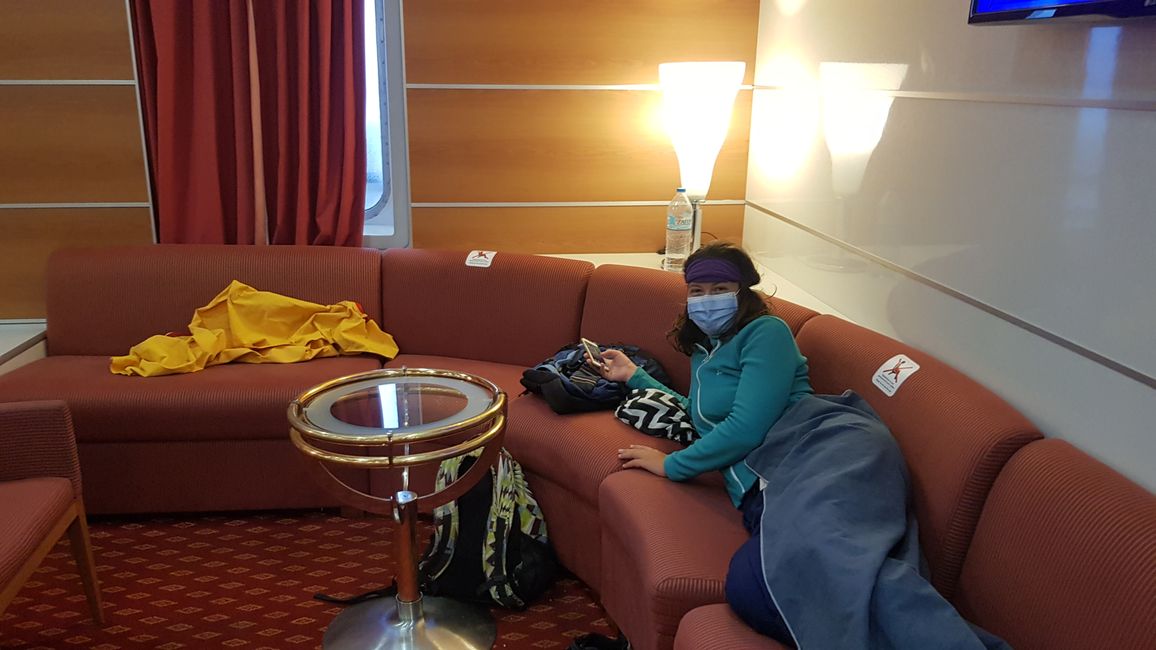
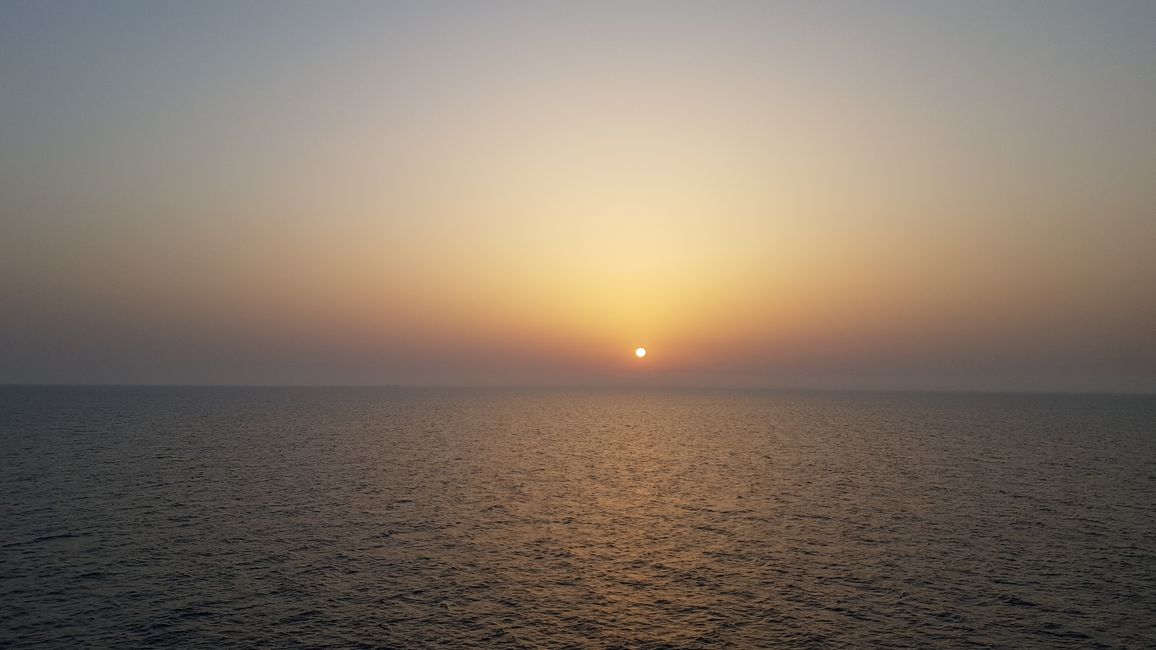
Abonējiet biļetenu
The strong wind causes rough seas during the journey, so we arrive in Aegiali over an hour late. Amorgos is the easternmost island of the Cyclades and has about 2,000 inhabitants. There is evidence that Amorgos was inhabited as early as the 3rd millennium BC and was one of the most important trading centers. The island is traversed by a mountain range along its entire length, which drops steeply into the sea on the southeast coast. In the northeast, there is a difficult-to-access mountain range, while the western part of the island is equipped with several small canyons leading to sandy beaches. Only in the coastal plains of Aegiali and Katapola is it possible to grow crops and olive trees. Amorgos is a water-poor island. The watercourses on the island only carry water periodically, and the streams dry up in the summer.
At the harbor, we are picked up by our hotel and taken to our accommodation. We get a beautiful room with a balcony and a sea view. When leaving the room, our eyes immediately fall on the impressive and exciting mountain. Just a 2-minute walk away is the long city beach. We want to take advantage of the opportunity to cook in a beautiful and well-equipped kitchen. Therefore, we take a stroll along the beach towards the harbor. Because the island is not that big and has a few hidden places, we also want to rent a small car. We visit a few car rental places until we can arrange a small Suzuki for the day after tomorrow in Katapola. We stock up on pasta, vegetables, and especially olives. Then we go back to cook ourselves a delicious pasta. We want to hurry so that we can enjoy the sunset from our balcony while eating. The plan works, and we have a nice romantic dinner. We go to bed early because we haven't slept much the past few nights.
We don't have much planned for the next day either. We want to spend the day at the nearby beach and only visit two villages in the evening. We were lucky with our hotel, as we also get to enjoy two free beach loungers in a beach bar. We make ourselves comfortable there for the day. The water is turquoise (no longer a surprise) and the waves are surprisingly high. This attracts many children and teenagers to the water, and their cheerful screams sometimes catch our attention. We also have fun with the waves that literally pull us into the sea. However, the wind is very strong and cool on this day, so we only go into the sea once. Otherwise, we chase after the shade, read, or sip smoothies/cold chocolate. We also play a game of Phase 10 again. So the hours at the beach pass quickly.
You can pick up our rental car from 6 pm. When we arrive, the owner puts us off, saying he has to have dinner first and then get the car. But he gets distracted by potential new customers, so dinner won't happen anyway. He finally brings us our little Suzuki. Then we can finally get going. We first drive to Tholaria and wind our way up in a few serpentine bends. Tholaria belongs to the village of Aegiali, which has a total of about 500 inhabitants. It is a cute village with nice little streets and taverns. We really like it. Then we make our way to the next village, Lagadha, which also belongs to Aegiali. This little place was recommended to us in Syros as well. Again, we find small, nice alleyways with flowers and taverns. We particularly notice the floor paintings here. We choose a taverna from whose rooftop terrace we can look down into the valley and watch the sunset. We eat Imam (stuffed eggplant with tomatoes, onions, and feta cheese) and a chickpea stew. We drink Amorgian wine, which does not taste so good to us, though. It already has a yellowish color and tastes slightly sour. But for €4.50 for half a liter, it's okay XD. The sun slowly sets behind the mountain on which Tholaria is located. Another unforgettable sunset. To top it off, we even get a free Raki. We wind our way back down the serpentine bends to Aegiali.
The next morning, we want to leave early to discover as much as possible. There is only one main road that leads across the island. Our first destination is the capital, Chora. The way there takes us past the beautiful island of Nikouria. In general, we drive through very barren countryside and discover the first goats by the roadside. Together with their associated villages, Chora has about 400 inhabitants. It is a medieval mountain village located at 400m and surrounded by windmills. As soon as we get out of the car, we are almost blown away by the wind. Here, you really have to fight against the wind with every step. So we quickly move into the village center, where it is a bit more sheltered from the wind. In addition to the nice streets and white-blue houses, you can also visit windmills and the remains of an old Venetian castle from the 13th century. But even in these exposed places, the wind is too strong for us. We were warned at the hotel that it is often very cool and windy in Chora. However, no one told us that it would almost blow us away. Feeling a bit out of breath, we get back in the car and drive towards the monastery.
The Byzantine monastery Chozoviotissa is about 5 minutes away from Chora and is a key attraction in Amorgos. It is located near the sea and is built against the steep cliffs at an altitude of 300m. After more than 300 steps from the parking lot, you reach the pearl-white building (it was windless here, by the way). Visiting the monastery is free. We particularly like the inner wall, which has remained a rock. Nearby is the Agia Anna beach, which has been well known since the film 'The Big Blue' by Luc Besson. It is characterized above all by its location at the foot of steep cliffs, as well as its sandy pebble beach and turquoise water. The beach is named after the nearby small chapel.
We continue on our way to Paradisia Beach. From here, small boats are supposed to regularly sail to the island of Gramvousa. But there is nothing and no one here except for quite high waves. We need to refuel anyway and check on Maps.me if there is a gas station nearby. Unfortunately, we find that there are only 2 gas stations on the whole island. For us, that means we have to drive 22km back to Katapola. Luckily, we still have plenty of time and only one more destination afterwards. So we drive the same route back and a little further to Kalotaritissa Beach, which is located in a bay in the far east of the island. Since it is an almost enclosed bay, there are hardly any waves. Supposedly, it is also protected from the wind. However, we can't share this experience. The sand blows into our faces more than once. Due to the strong wind, the water feels significantly warmer to us. There are sun umbrellas and lounge chairs, as well as some small, colorful boats that add to the Greek beach atmosphere. Not to forget the clarity of the water once again. We spend another 3 hours here, finishing our books and eating bougatsa and another Amorgian sweet with sesame and honey. In our heads, we bid farewell to the beautiful beaches of the Greek islands. For the fourth time, we drive the same route back towards Katapola. On the way, we make a short stop to see the shipwreck Olympia, which is located in a small bay. The former cargo ship sank on February 13, 1980, and was also used as a location in Luc Besson's film. The waves hitting the ship's belly are particularly impressive. The small path down to the bay allows us to move around a bit more. On the way back, we hear a kid goat calling from the rocks. It doesn't seem to calm down, hopefully, it will find its mother soon. Back in Katapola, we get food for the ferry ride, briam (mixed oven-baked vegetables) and zucchini balls. We quickly return the car and then head to the ferry, which this time departs almost on time.
We also really enjoyed Amorgos. Because the island is sparsely populated, there is not much going on. But the infrastructure is really well developed. There are also regular bus lines to the villages. We are grateful for the advice from Syros, without which we probably would never have come to this island. It is still definitely a hidden gem, but we suspect not for long. For us, it was a beautiful end to our island tour.
On the ferry ride to Athens, we stop again in Koufonissi, Schoinousa, Iraklia, Naxos, and Paros. So we say goodbye to the Cyclades at sunset one more time. Strong gusts of wind cause significant rough seas. Many things on the ferry are chaotic. We are frequently disturbed during the night, so we don't get much sleep. After about 10 hours of travel, we arrive in Piraeus, the port of Athens, at 5 am. We take the first train to Patras. Here, we first look for something for breakfast and a café to sit in. Then we walk for a good half hour to the harbor to pick up our tickets and leave our large backpacks. To stock up on snacks for the journey, we go to the nearest supermarket. We are thrilled with the abundance and variety of different vegan products. Shopping is a lot of fun with such a well-stocked store. Well-equipped, we lie down in the park across the street. We rest a bit from the sleepless night since another night ferry ride awaits us. At the ferry port, we get Gemista one more time because we find it so delicious. Then we secure a good spot on the ferry, hoping to sleep better tonight. Greece was great!
We are currently somewhere between Patras and Igomenitsa and are already looking forward to Apulia - the trulli are waiting for us.
Abonējiet biļetenu
Atbilde
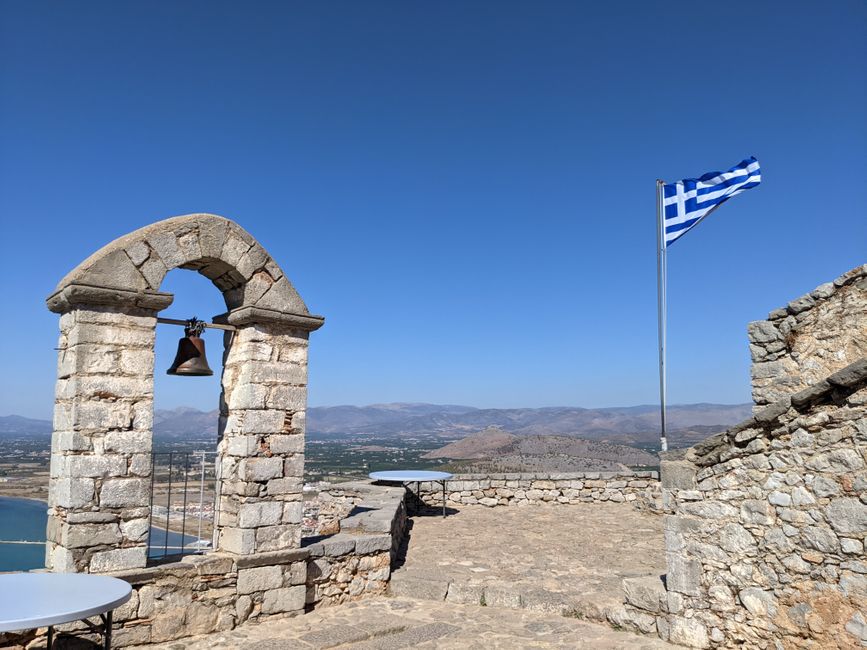
Ceļojumu pārskati Grieķija
